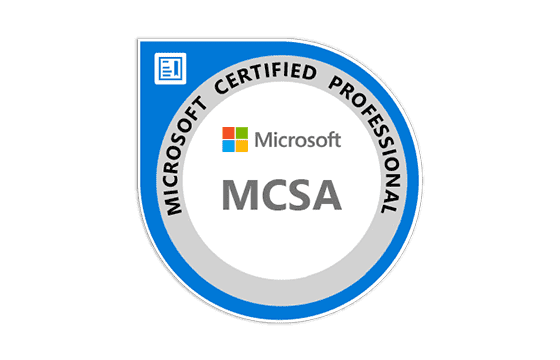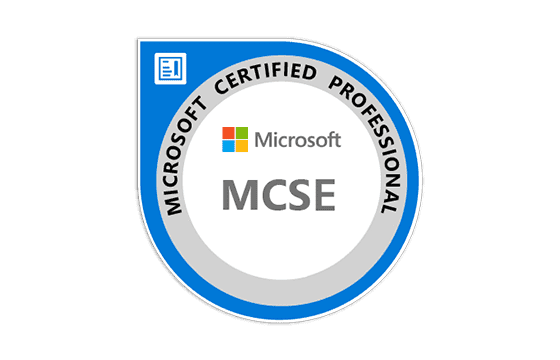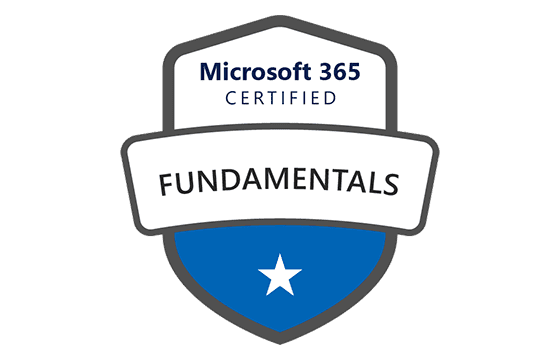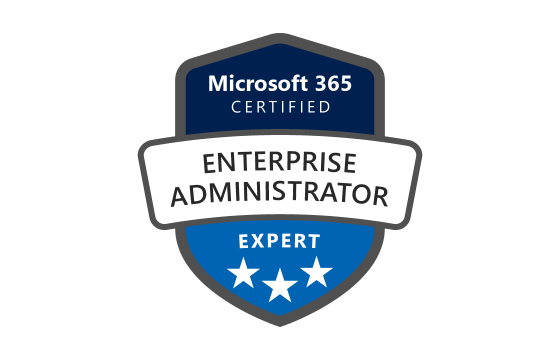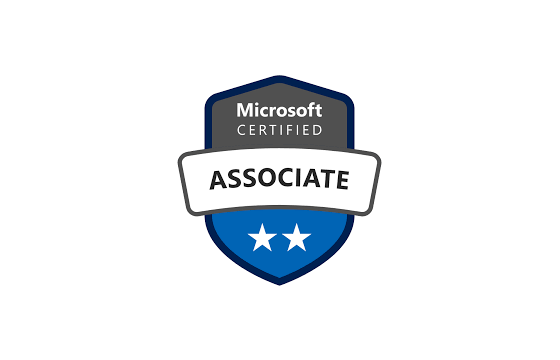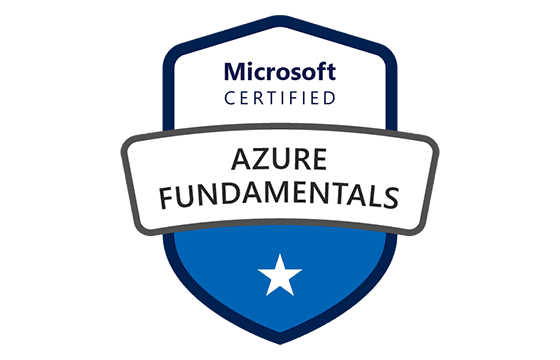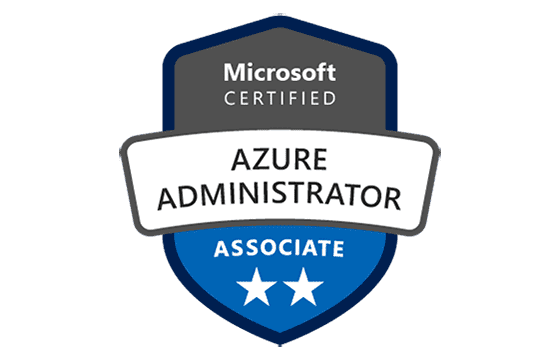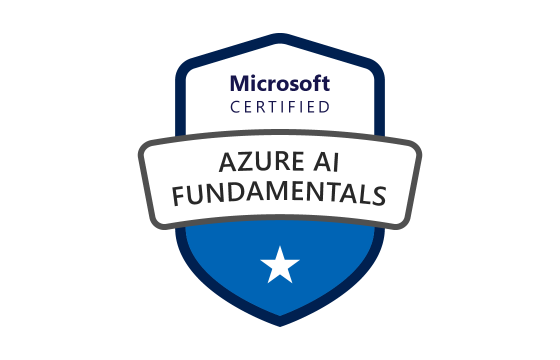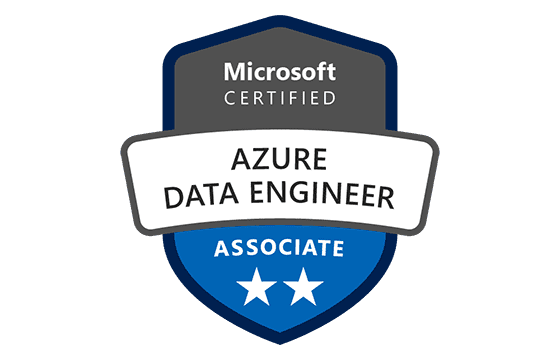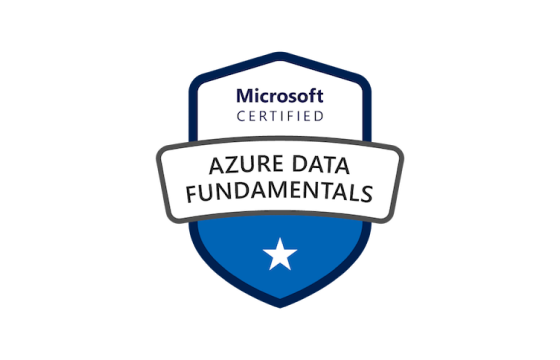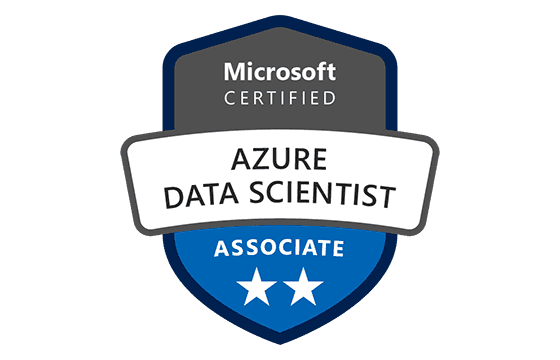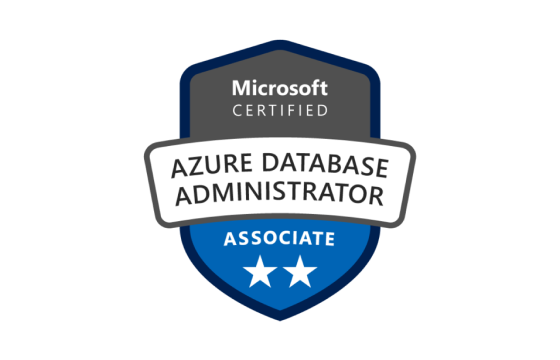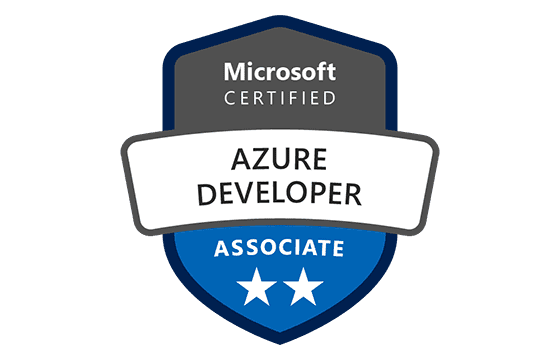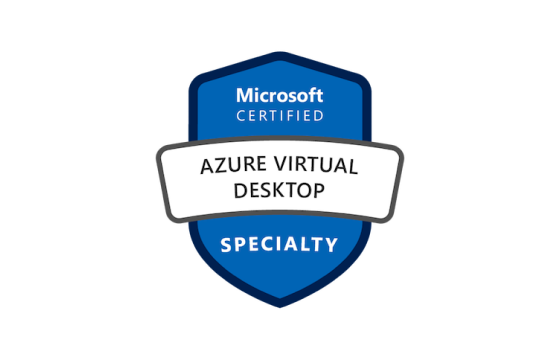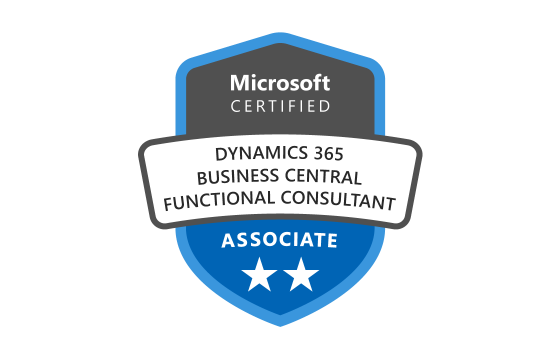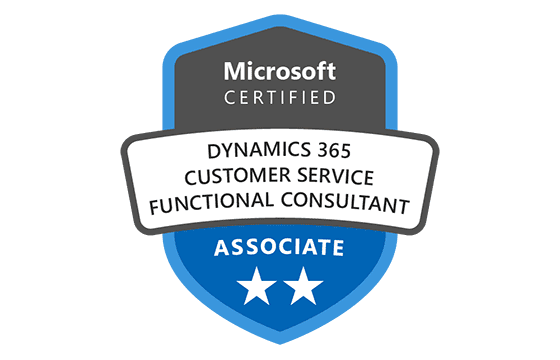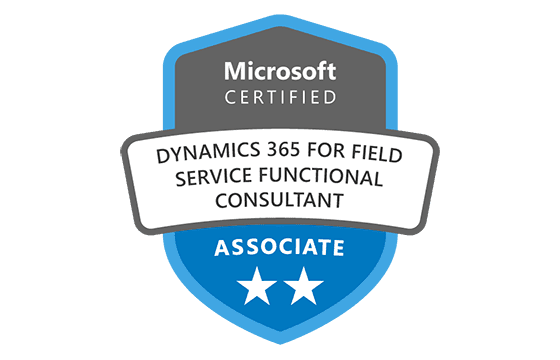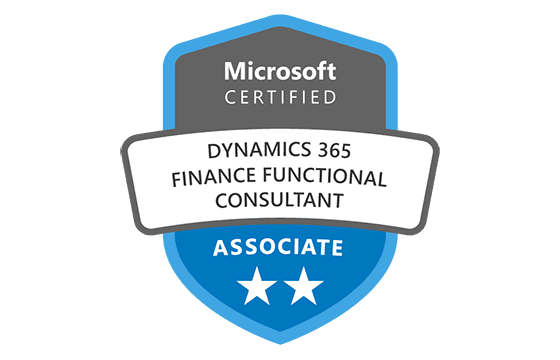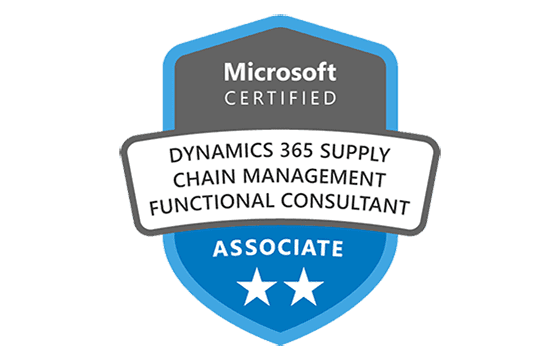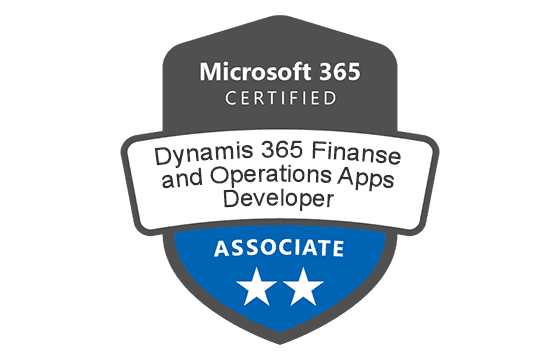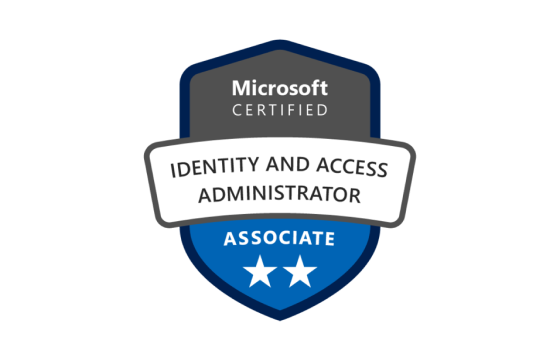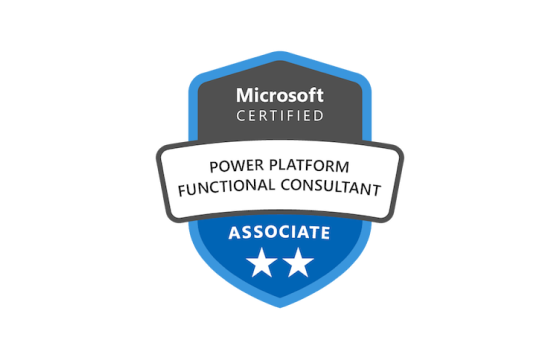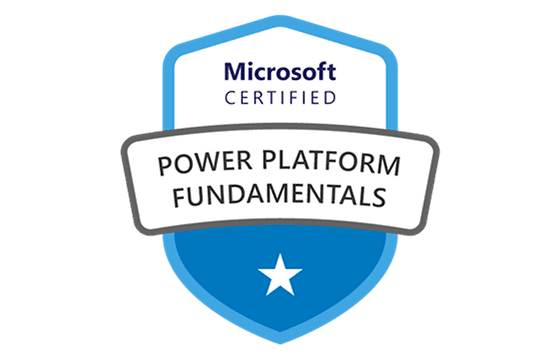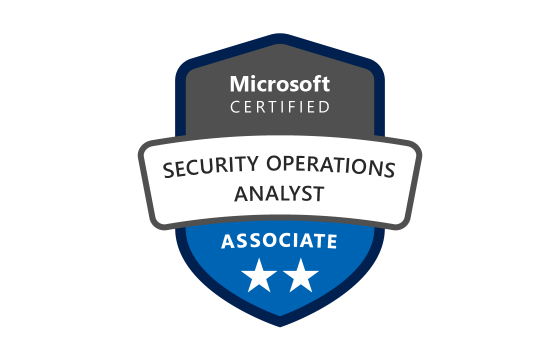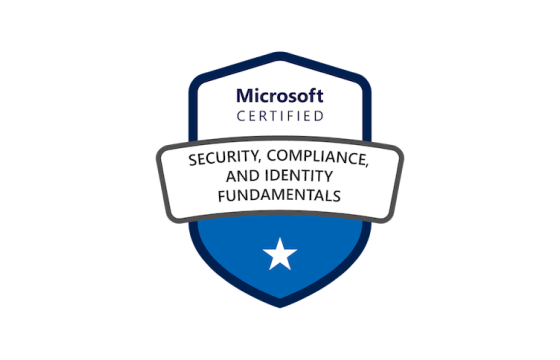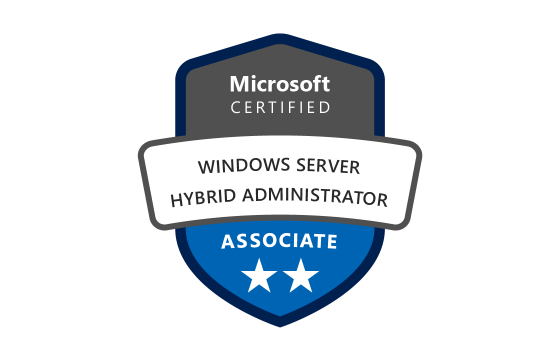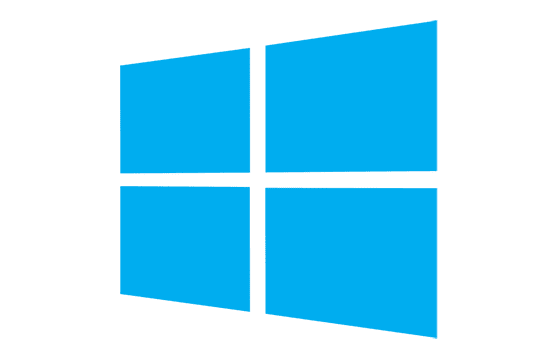Pass Your Microsoft 70-648 Exam Easy!
Microsoft 70-648 Exam Questions & Answers, Accurate & Verified By IT Experts
Instant Download, Free Fast Updates, 99.6% Pass Rate
Microsoft 70-648 Practice Test Questions in VCE Format
| File | Votes | Size | Date |
|---|---|---|---|
File Microsoft.Pass4Sure.70-648.v2013-05-02.by.StraightEvil.426q.vce |
Votes 2 |
Size 3.23 MB |
Date May 05, 2013 |
File Microsoft.Pass4Sure.70-648.v2013-02-10.by.kazi.491q.vce |
Votes 1 |
Size 3.42 MB |
Date Feb 14, 2013 |
File Microsoft.SelfTestEngine.70-648.v2012-08-30.by.ayan.419q.vce |
Votes 1 |
Size 5.1 MB |
Date Aug 30, 2012 |
File Microsoft.Pass4Sure.70-648.v2012-07-14.by.Nelson.470q.vce |
Votes 1 |
Size 2.96 MB |
Date Jul 15, 2012 |
File Microsoft.Various.70-648.v2012-03-15.by.Ginger.406q.vce |
Votes 1 |
Size 4.82 MB |
Date Apr 29, 2012 |
File Microsoft.Braindump.70-648.v2012-03-15.by.Ginger.448q.vce |
Votes 1 |
Size 5.69 MB |
Date Apr 08, 2012 |
Archived VCE files
| File | Votes | Size | Date |
|---|---|---|---|
File Microsoft.Certkey.70-648.v2011-06-08.by.Gomas.450q.vce |
Votes 1 |
Size 3.22 MB |
Date Jun 09, 2011 |
File Microsoft.SelfTestEngine.70-648.v2010-08-02.by.Tasha.90q.vce |
Votes 1 |
Size 489.2 KB |
Date Aug 04, 2010 |
File Microsoft.SelfTestEngine.70-648.v2010-05-27.by.Greenez.88q.vce |
Votes 1 |
Size 487.27 KB |
Date May 27, 2010 |
File Microsoft.SelfTestEngine.70-648.v2010-02-17.by.Greenez.85q.vce |
Votes 1 |
Size 483.22 KB |
Date Feb 22, 2010 |
File Microsoft.SelfTestEngine.70-648.v2009-08-24.by.Toni.135q.vce |
Votes 1 |
Size 585.33 KB |
Date Aug 24, 2009 |
File Microsoft.Testking.70-648.v2.73.by.GillBeast.80q.vce |
Votes 1 |
Size 448.25 KB |
Date Jul 29, 2009 |
File Microsoft.Certkiller.70-648.v2.73.vce |
Votes 1 |
Size 236.32 KB |
Date Mar 22, 2009 |
Microsoft 70-648 Practice Test Questions, Exam Dumps
Microsoft 70-648 (TS: Upgrading Your MCSA on Windows Server 2003 to Windows Server 2008, Technology Specialist) exam dumps vce, practice test questions, study guide & video training course to study and pass quickly and easily. Microsoft 70-648 TS: Upgrading Your MCSA on Windows Server 2003 to Windows Server 2008, Technology Specialist exam dumps & practice test questions and answers. You need avanset vce exam simulator in order to study the Microsoft 70-648 certification exam dumps & Microsoft 70-648 practice test questions in vce format.
Your Ultimate Survival Guide to Passing Microsoft’s 70-648 Exam
The 70-648 exam emerged in the era when organizations were rapidly shifting from legacy infrastructures to the evolving technological framework of Windows Server 2008. Professionals who already held the MCSA on Windows Server 2003 certificate needed a proper channel to upgrade their knowledge without starting from the beginning, and that channel manifested in the form of the 70-648 upgrade exam. The purpose of this exam was not just to check theoretical understanding but to verify a candidate’s ability to merge experience with modern server environments. Instead of introducing concepts from scratch, the exam measured how well an MCSA professional could adapt to new structural changes, updated components, and advanced server configurations. This made the 70-648 certification journey more efficient for those who had spent years working on Windows Server 2003 and wanted to showcase their adaptability in a constantly evolving digital ecosystem.
The Foundation Of Understanding The 70-648 Exam
The exam was essentially a unique combination of two standalone tests, which were 70-640 and 70-642. Each of those focused on different aspects of Active Directory configuration, network infrastructure, and enhanced security implementations. Microsoft crafted 70-648 in a way that respected the skills professionals already possessed, while also pushing them to learn new capabilities. The introduction of improved identity management, dynamic server roles, and virtualization ideas turned Windows Server 2008 into a pivotal platform for network administrators. To validate this shift, the exam included multiple question formats such as drag and drop, simulations, hot areas, and logical selections. The intention behind this variety was to ensure that the candidate was not simply memorizing answers but could navigate real administrative environments.
Understanding the 70-648 exam requires acknowledging why the upgrade was necessary. Windows Server 2003 was a stable and trusted system, but as enterprises expanded and demanded more security, scalability, and reliability, new operating system features became essential. Directory services needed more flexibility, network resources required better control, and administrators needed clearer command over authentication policies. Windows Server 2008 introduced improvements such as read-only domain controllers, server core installations, advanced group policies, enhanced DNS tools, and improved DHCP management. The 70-648 certification forced candidates to understand how these advancements transformed daily operational strategies inside medium to large organizations. The exam content helped administrators realize that success was not just in operating servers, but in shaping resilient and secure infrastructures.
When someone prepared for this exam, they were not simply memorizing definitions. They were adjusting their thought process to a more future-oriented form of system handling. Many professionals in that era were used to certain administrative routines that became outdated with enhanced tools and policies. For example, group policy preferences allowed administrators to design more granular configurations without complicated scripts. Network Access Protection offered a stronger method to enforce compliance across connected systems. Domain controllers gained resilience against unauthorized tampering, especially in branch offices where physical security could not always be guaranteed. The 70-648 exam measured whether a candidate understood these differences and could apply them logically in real environments.
Candidates who sat for the test encountered approximately fifty to sixty questions across a two-hour session. This timeframe encouraged faster decision-making and reduced hesitation that often arises in simulated network problem-solving. The passing score was seven hundred out of one thousand, which reflected a balanced structure where both accuracy and comprehension mattered. Candidates could not simply rely on lucky guesses because many questions required step-by-step reasoning. The retake policy also demanded patience. If someone failed the exam once, they could try again immediately, but after multiple failures, a waiting period applied before another attempt. This waiting period ensured that individuals returned with improved preparation instead of repeatedly guessing answers.
The real value of the 70-648 qualification appeared after achieving the passing score. The exam granted credit toward professional level certifications such as MCITP Server Administrator and MCITP Enterprise Administrator. It also provided the Microsoft Certified Technology Specialist titles for Windows Server 2008 Active Directory Configuration and Network Infrastructure Configuration. This meant that one upgrade exam opened multiple career pathways. Professionals who had spent years working on server management gained fresh recognition, modernized their resumes, and became suitable for advanced roles in growing networks. Even today, the history of this exam shows how Microsoft adapted to the constant transformation in technology by offering streamlined certification paths.
The nature of questions in the exam reflected real administrative tasks. A simulation might require identifying the correct tool to configure a group policy or enabling a particular role on a server core installation. Build list and reorder questions demanded logical sequencing, for example setting up DHCP failover or configuring DNS delegation. Hot area questions tested the ability to identify correct configuration sections within visual interfaces. Drag and drop questions examined how objects or settings related to each other. All of these patterns created an immersive learning experience and encouraged administrators to rely on real knowledge instead of memorizing answer choices.
However, preparing for the 70-648 exam took dedication. Candidates needed a deep understanding of user management, security policies, DNS behavior, DHCP scopes, forest and domain configurations, trust relationships, and server roles. Understanding how certificates worked, how key distribution centers operated, or how to troubleshoot network issues made a huge difference. Even the smallest mistake in DNS or IP addressing could crash a system or break authentication, so the exam rewarded accuracy. While many individuals found the test challenging, those who already had strong hands on experience with Windows Server 2003 adapted quickly. The shift from manual configurations toward automated monitoring and policy driven controls represented a significant upgrade in administrative philosophy.
For individuals working in large enterprises, passing the 70-648 exam meant more than a certificate. It represented the ability to protect corporate networks, secure data flow, and maintain business continuity. Companies valued administrators who understood the latest server technologies, because outdated knowledge could expose systems to vulnerabilities and outages. Network security threats were already growing during that time, and organizations wanted strong authentication, stable routing, and better control over remote access. A certified administrator became a guardian of digital infrastructure, ensuring uptime, availability, and resilience. Many professionals used the certification to receive promotions, salary upgrades, or leadership roles in their IT departments.
The exam also emphasized troubleshooting, because real world server environments often experience unexpected issues. Knowing how to restart services, repair broken replication, resolve DNS failures, or identify misconfigured permissions was crucial. Troubleshooting required more than book knowledge; it required the calm mindset of a problem solver. The exam pushed candidates to demonstrate not only what they knew, but how they applied it. This made the certification more practical than purely theoretical exams.
Over the years, countless system administrators shared their stories about passing the 70-648 exam. Some enjoyed the feeling of upgrading their knowledge while others found the process intimidating. Yet, the sense of achievement after passing was always the same. Many continued learning after certification, expanding into virtualization fields, cloud technologies, and modern server roles. The certification became a stepping stone toward wider technological ecosystems. Even though Windows Server 2008 belongs to an earlier stage of innovation, the principles it introduced shaped the current generation of system management approaches.
The 70-648 journey also contained an element of personal discipline. Nights spent reading documentation, practicing with server environments, or experimenting with domain controllers taught persistence. It improved not only technical skills but patience, precision, and analytical thinking. Professionals discovered that problem solving inside server environments often mirrored real life situations. When faced with challenges, careful thinking and structured strategies proved more effective than panic or guesswork. The exam was therefore not simply a test of memory. It was a mental exercise that built confidence in complex work scenarios.
Some candidates prepared through individual practice while others studied in teams. Many used virtual machines to simulate entire networks, create forests, test DNS delegations, configure DHCP reservations, or deploy client systems. These hands on experiences helped them understand why certain configurations mattered. By experimenting with incorrect settings, they learned how failures propagated and how to reverse them. This ability to experiment safely was one of the strongest advantages of digital learning.
Today, the legacy of the exam reminds us that technology never stops evolving. Certification paths change, new operating systems replace older ones, and fresh features require ongoing learning. Yet, the same principle remains constant. Professionals must keep adapting. This mindset began with transitions like those tested in the 70-648 exam. By upgrading from Windows Server 2003 to 2008, administrators gained a deeper understanding of identity management, virtualization, secure policies, and enhanced server architecture. These skills transcended time and continued to be useful in later systems.
While the exam is part of technological history now, it continues to be a reference point for those who lived through that transformation. Learning how systems evolve teaches valuable lessons for the future. Even modern network administrators who study historic certifications gain appreciation for how far server technologies have advanced. The discipline, logic, and adaptability required for the 70-648 exam demonstrate that success in information technology depends on continuous learning. The exam proved that those who invest in their skills build stronger careers and protect the networks that the world depends on every day.
The Evolution Of Administrative Skills Through The 70-648 Exam
The world of system administration has always been shaped by relentless technological progression, and the shift from Windows Server 2003 to Windows Server 2008 became a turning point in many professional journeys. The 70-648 exam symbolized more than an academic hurdle. It represented an intellectual transformation from outdated routines to refined infrastructure management. Many administrators discovered that the knowledge they once relied upon no longer aligned perfectly with updated environments. Instead, enhanced server features demanded analytical thinking rather than repetition of old habits. The exam required candidates to think critically about not only how systems operated, but why certain features existed in the first place. This shift in mindset turned routine operators into strategic thinkers, capable of designing more resilient and intelligent systems.
When Windows Server 2008 emerged, it introduced features that redefined identity management, policy control, and advanced communication inside enterprise networks. Some administrators were initially overwhelmed by the volume of changes because the platform did not simply expand upon the 2003 model. It restructured many internal behaviors. The introduction of read only domain controllers provided safer branch office deployments, server core installations reduced attack surfaces, and advanced group policy tools simplified configuration management. The 70-648 exam captured these changes and measured how well a candidate could adapt their knowledge to modern practices. This adjustment built confidence in professionals who had relied heavily on messaging, authentication, and security strategies from previous years. Instead of treating new features as complicated or unnecessary, they realized that every enhancement existed for a practical reason.
Many professionals who pursued the 70-648 certification were experienced individuals working in large organizations. They were responsible for handling identity verification, resource access, file servers, central data points, and domain trust relationships. Their daily responsibilities required technical wisdom and calm analytical reactions to unpredictable problems. When the exam was introduced, these administrators finally had a single pathway to validate their experience and expand their credentials. The journey toward completing 70-648 was often filled with experimentation, study sessions, and hands on training. Some professionals built virtual labs to test domain configurations, user replication, secure communication protocols, or DHCP allocations, because real-world simulation delivered deeper insight than reading documents alone. These practice environments became miniature representations of enterprise networks, showing how minor decisions could influence uptime, security, and user experience.
One of the most valuable aspects of the 70-648 exam was its emphasis on practical understanding. The test avoided unnecessary complexity and instead focused on realistic administrative tasks. This approach resonated with working professionals. They already understood how disruptions in DNS, broken trust relationships, misconfigured domain controllers, or incorrect IP addressing could lead to widespread network failures. The exam reminded them that the smallest oversight could produce cascading consequences. For instance, DNS adjustments could affect authentication, group policies, replication, and application behavior. Understanding these intricate details meant mastering not only concepts but the logic behind them. The exam rewarded precision, careful planning, and familiarity with the underlying structure of network operations.
In many ways, the 70-648 exam symbolized a rite of passage for administrators transitioning into the new age of enterprise computing. It was not just about memorizing commands or recognizing visual screenshots. It required comprehension of server roles, authentication paths, certificate services, routing strategies, and policy enforcement. These concepts demanded time and patience. Many candidates found themselves reviewing official documentation, spending late hours troubleshooting lab environments, and practicing configurations repeatedly until the behavior of each feature became instinctive. The process shaped them into more reliable professionals. It cultivated habits of caution, accuracy, and strategic foresight.
The evolution of administrative skills reflected in the 70-648 exam changed how professionals interacted with server ecosystems. One of the most important transitions was understanding the deeper structure of Active Directory. Windows Server 2008 expanded the capabilities of identity management through improved replication, read only controllers, granular password policies, and better auditing. The exam ensured that candidates learned how these upgrades influenced daily operations. Many administrators discovered that authentication integrity and data safety improved significantly with these new tools. By learning how to deploy and maintain them, they elevated their value as professionals and provided stronger protection for their organizations.
Network infrastructure was another vital topic examined in 70-648. Windows Server 2008 introduced changes to routing, security policies, DHCP management, and enhanced DNS operations. Candidates learned that network resources behaved differently when policy enforcement and health monitoring became stricter. Server administrators gained awareness of potential threats that could exploit misconfigured settings or outdated practices. The exam materials made it clear that future networks required both efficiency and vigilance. It was not enough to build a functioning network. The network needed to detect issues, report failures, and maintain smooth communication without exposing vulnerabilities. This advanced thinking improved stability inside corporate environments, where downtime translated to financial loss.
The transition to Windows Server 2008 also introduced a deeper reliance on virtualization. Many candidates preparing for the 70-648 exam explored virtualization concepts, even though the test itself was not exclusively centered on hypervisors or virtual machine hosts. Understanding virtualization helped administrators reduce hardware costs and increase server flexibility. By practicing these technologies, they discovered simpler methods to deploy test environments, develop safer backups, or clone systems. The exam influenced professionals to explore this rapidly growing trend, which eventually became standard practice in modern data centers.
Candidates who approached the 70-648 exam without prior experience often discovered that preparation required a steady learning curve. The shift from Windows Server 2003 was not always intuitive because new server behaviors required a different mental model. The server core installation option demanded comfort with command line management, which strengthened logical thinking. New group policy mechanisms demanded a deeper understanding of how clients processed instructions. Enhanced certification services introduced more flexible ways to secure identities. The challenge encouraged students to practice repeatedly, because reading theory alone could not guarantee success. The exam rewarded real knowledge, not passive memorization.
Many professionals reflected on how their mindset changed as they prepared for the exam. In the beginning, they approached the content as simple upgrade material. Over time, they recognized that Windows Server 2008 represented a technological shift toward more intelligent systems. The exam forced them to dissect problems piece by piece, identify root causes, and anticipate issues before they spread. This thinking became extremely valuable in enterprise settings where small mistakes have significant consequences. The analytical discipline developed through exam preparation carried forward into years of workplace experiences, shaping them into more thoughtful administrators.
The importance of troubleshooting was also reinforced through 70-648. Administrators learned to interpret error logs, trace connectivity paths, repair corrupted records, restore lost communication between controllers, and stabilize DHCP functions. Troubleshooting demanded patience. Candidates practiced handling damaged configurations without panicking, and learned to follow methodical processes instead of random guesses. This shaped their professional behavior. Many quick solutions in older systems no longer applied to newer frameworks, so structured analysis became the key to resolving failures. The exam validated this disciplined thought process.
Even though the exam belonged to an earlier technological generation, the principles it introduced continued into future server releases. Many who mastered 70-648 found it easier to learn later systems because they already understood why server architecture changed. They gained confidence in handling authentication, networking, certificates, and policy management. They took on leadership roles and trained colleagues who were new to enterprise administration. The certification gave them authority, but more importantly, it gave them depth. Their experience extended beyond commands or interface familiarity. It involved strategic understanding of how technology supported business functions.
The experience of taking the 70-648 exam varied from person to person. For some, passing it on the first attempt was an achievement that strengthened their career immediately. Others struggled and had to retake the test. However, even failure became a learning experience. It demonstrated which areas required more attention. The retake policy encouraged candidates to prepare carefully, not rush. When they eventually passed, the success felt meaningful because it represented genuine improvement, not just luck.
The exam also held emotional significance. Many candidates felt a sense of renewal after passing. Their older Windows Server 2003 skills were respected, but their updated knowledge made them competitive in a fast-moving environment. Companies preferred professionals who kept learning instead of relying on outdated expertise. Maintaining certification reminded employers that their IT department was progressive and prepared for modern threats. Technology constantly grows, and administrators must grow with it. The 70-648 exam acknowledged this truth.
The experience also united a community of learners. Forums, study groups, and classroom discussions were filled with administrators comparing notes, sharing troubleshooting tips, and exchanging real-world examples. This collaboration strengthened motivation. Candidates realized they were not alone in the challenge. They discovered that learning was not a solitary journey. Many who passed helped others study afterward. They shared exam insights, suggested practice topics, and encouraged patience. This sense of shared achievement created a lasting impression.
As time continued, technology marched forward. New operating systems replaced older ones. Servers became more powerful, more intelligent, and more integrated with the cloud. Yet, the foundation built by the 70-648 era remains relevant. Administrators who earned the certification learned how to evaluate change, how to adapt, and how to master unfamiliar technologies. Their careers advanced because they proved they could evolve intellectually. The certification was not simply a document. It was a symbol of transformation.
The experience shows that knowledge is never wasted. Even outdated systems teach lessons that apply to modern infrastructures. Anyone who worked through the 70-648 exam understood configuration management, identity security, infrastructure planning, and logical troubleshooting. These lessons carry forward into the present age of virtualization, remote administration, and cloud computing. The same logical structure applies. The same attention to detail protects data. The same disciplined thinking prevents catastrophic failures. Professionals who learned through this exam still rely on its principles today.
The Practical Realities Of Preparing For The 70-648 Certification Exam
Preparing for the 70-648 certification exam was a journey that demanded persistence, patience, and a strong willingness to adapt. Many candidates entered the process with confidence, believing that years of experience with Windows Server 2003 would automatically secure success. However, as they progressed through study material and practice environments, they discovered that modernization was not just about recognizing new features but about reshaping their technical thinking. Windows Server 2008 introduced new administrative philosophies that replaced dated techniques, and the exam validated whether a candidate could embrace these changes in an intellectual and practical manner. Preparing for 70-648 gradually became an immersive learning phase rather than a simple memorization exercise.
Every candidate approached preparation differently. Some relied on structured classroom learning, where instructors explained advanced concepts, demonstrated live configuration steps, and answered challenging questions. Others preferred independent studying, collecting documentation, official material, or self-created notes. Many professionals discovered that preparation was most effective when they constructed virtual labs. Virtual environments allowed them to experiment freely with domain controllers, DNS zones, DHCP servers, certificate services, trust relationships, and group policies, all without risking the stability of live production systems. These isolated platforms became invaluable training grounds because every change could be tested, reversed, and tested again until the logic became absolutely clear. For many, hands-on simulation brightened the path to exam success.
A surprising part of preparation involved unlearning old habits. Administrators who spent years with Windows Server 2003 were used to familiar tools, customary troubleshooting methods, and traditional management styles. When confronted with new interfaces, improved command utilities, and redesigned configurations, they understood that knowledge was no longer static. Server environments evolved, and administrators needed to evolve along with them. The 70-648 exam represented this evolution. It challenged candidates to let go of outdated ideas, explore refreshed configurations, and appreciate the sophisticated capabilities that came with the new architecture. Those who embraced change discovered that the exam became less intimidating and more exciting.
A candidate preparing for the exam needed to understand Active Directory in a deeper, more flexible manner than before. Identity management in Windows Server 2008 involved new replication efficiencies, auditing enhancements, password policy refinements, and read only domain controllers that protected remote environments. Understanding how these features improved security and stability was essential. This knowledge meant learning not only how to configure them, but when to use them. Preparation became a study in decision making. An administrator had to recognize the right scenarios for deploying certain features, not simply memorize instructions. These scenarios could appear inside exam questions, where the candidate determined which action solved a particular problem. Without genuine understanding, the test became difficult.
Studying DNS once again emphasized the depth of preparation required. DNS was not merely about resolving names to addresses; it served as the backbone of authentication and host communication inside a domain. Windows Server 2008 introduced more options for zone replication, secure updates, aging and scavenging, and conditional forwarding. A candidate needed to understand how each of these behaviors influenced network stability. Misconfigured DNS could easily disrupt domain controller communication or cause unreachable services. This made DNS a central topic of study. Experienced administrators often created multiple zone configurations in labs to observe changes in functionality and fault tolerance. By experimenting with delegation, stub zones, or resolving failures, they learned patterns that helped them solve exam questions with greater confidence.
DHCP preparation contributed another dimension of learning. Many professionals were surprised by new abilities introduced in Windows Server 2008, such as improved failover potential and the ability to manage network clients with greater flexibility. To prepare for the exam, candidates explored address leases, reservation management, scope configurations, and dynamic allocation behavior. They learned how DHCP and DNS worked together to maintain healthy name resolution. The exam tested whether a candidate recognized how network clients gained configuration settings and what actions were required if DHCP encountered conflicts or resource exhaustion. Preparation required both theoretical understanding and practical experimentation with test networks.
Group policy planning also became a major area of learning for the 70-648 exam. Administrators who previously relied on basic group policy configurations discovered an entirely improved landscape in Windows Server 2008. Group Policy Preferences provided refined control without scripting. Security filtering allowed more strategic targeting of settings. Administrative templates improved consistency and offered clearer control over client behavior. Preparing for the exam demanded careful exploration of these capabilities. Candidates practiced linking policies, resolving conflicts, configuring inheritance, and verifying behavior on client machines. They learned how group policy shaped the everyday user experience across entire organizations. Through repeated testing, they became comfortable navigating policies, adjusting settings, and troubleshooting failed client applications.
Certificate services introduced another area of study that many administrators needed time to master. Windows Server 2008 expanded certificate management, providing improved control over key distribution, smart card logon, and wireless encryption. Candidates realized that certificate administration influenced secure authentication and data protection throughout enterprise networks. To prepare, they reviewed certificate authorities, enrollment processes, templates, and revocation structures. They experimented with issuing certificates, removing them, and restoring functionality after expiration or corruption. This deepened their understanding of identity protection and communication safety. The exam often presented situations where certificates failed, and candidates had to identify the logical repair method.
Preparing for the 70-648 exam was mentally challenging, but it also strengthened problem-solving skills. Many candidates discovered that the exam’s hardest questions were not the most technical ones, but those that required choosing the best possible answer among several reasonable possibilities. The exam pushed candidates to think like administrators who needed to protect business continuity. Even when multiple solutions seemed acceptable, the correct answer represented a more strategic approach. This prepared professionals for real environments where faster or easier solutions were unsafe in the long term. Through consistent studying, candidates learned that perfect configuration was not just about achieving results, but achieving them correctly, securely, and sustainably.
Time management also played an important role in preparation. The exam contained many questions within a limited period, forcing candidates to think quickly. They practiced reading questions carefully, eliminating distractions, and evaluating solutions logically. Many built small personal strategies, such as answering easier questions first, leaving complicated ones for later, or avoiding unnecessary stress. These methods helped them remain calm under pressure. As preparation continued, their confidence grew. The more they practiced, the more natural the questions felt.
Emotional perseverance became a quiet but powerful part of the experience. Some candidates spent months preparing, balancing full-time jobs, family responsibilities, and study schedules. They read late at night, reviewed concepts during breaks, or experimented with virtual machines on weekends. The journey was draining at times, but satisfying once progress became visible. Passing practice tests, solving troubleshooting scenarios faster, and recognizing advanced configurations created a sense of personal growth. By the time they entered the actual exam room, they carried more than technical knowledge. They carried discipline.
The day of the exam was a psychological test as well as a technical one. Candidates walked into testing centers aware that their performance would reflect months of effort. Some experienced nervousness. Others carried excitement. The environment was quiet, structured, and filled with focus. Every question demanded attention. The challenge was not simply selecting answers; it was recalling experience, logic, and all the small details learned during preparation. Those who prepared thoroughly felt moments of clarity as they recognized scenarios from their virtual practice labs. Real-world knowledge made the experience manageable, even rewarding.
After completing the exam, candidates looked back on their preparation and realized how much they had grown. They not only learned about Windows Server 2008 but also discovered deeper intellectual strength. They practiced critical thinking, built confidence, expanded their troubleshooting skills, and sharpened their decision-making abilities. Many confessed that preparation changed how they approached their daily administrative tasks at work. They became more cautious, strategic, and analytical. They learned how to understand complex problems instead of rushing toward assumptions. The preparation for 70-648 reshaped their professional behavior for years ahead.
Some candidates failed their first attempt, and although disappointing, it became part of the learning journey. The retake policy allowed them time to review mistakes and strengthen weak areas. Retaking the exam felt more manageable because they already knew the testing environment and the structure of questions. When they eventually passed, the success felt far more meaningful because it came from persistence rather than chance.
Others passed on their first attempt, but their preparation journey remained equally valuable. Success did not mark the end of learning. Many candidates continued exploring advanced server features, moving toward roles with greater responsibility. The discipline they developed while preparing for 70-648 followed them into future projects and technological shifts.
Preparation for this certification exam demonstrated an important truth. Technology never stops changing. Administrators must treat learning as an ongoing responsibility. The exam represented a moment in technological history when professionals updated their knowledge to serve the needs of modern organizations. The skills they acquired continued to support system stability, protect networks, and strengthen enterprise environments. The preparation became a powerful reminder that knowledge is not static. It is a continuous path.
The world of professional certification rarely stands still, and many aspirants discover that mastering an upgrade examination is far more intricate than clearing a conventional entry-level test. The transition exam known as 70-648 became notable for this very reason, because it was purposefully crafted for seasoned administrators who had already dominated Windows Server 2003 environments and now needed to demonstrate that their knowledge had evolved to match the innovations of Windows Server 2008. While some candidates misunderstood the nature of this upgrade, those who investigated deeper realized that the exam was a multi-dimensional evaluation, measuring whether an administrator could navigate migration, configuration, and operational challenges without hesitating in a high-stakes enterprise ecosystem.
As organizations expanded and networks became labyrinthine compositions of linked servers, remote branches, virtual directories, interlaced authentication mechanisms, and complex group policies, companies demanded specialists who could administer everything with precision. The 70-648 exam symbolized that necessity, because it validated the candidate’s ability to manage modernization rather than simply memorize theoretical fragments. Microsoft intended the upgrade process to verify adaptability. A candidate moving from Server 2003 had to show they could survive the rigor of Server 2008 infrastructure management, a system enriched with new security structures, dynamic administrative controls, and more advanced identity configurations. The person taking this exam often found themselves revisiting their older assumptions, recognizing that features familiar in 2003 had mutated into more elaborate and sometimes stricter mechanisms in 2008. This transformational awareness was not optional; it was required.
Candidates noticed that the underrated difficulty of 70-648 did not come from exotic question formats, but rather from the subtle nature of applied knowledge. A question might ask how to implement a forest functional level upgrade or manage Read-Only Domain Controllers in a branch office. The unprepared candidate believed the answer was simple, but the test frequently required recognizing the right order of tasks, GUI paths, command-line parameters, or prerequisite steps. Every question pushed the test-taker to demonstrate realistic judgment. The exam objectives covered the architecture of Active Directory, authentication strategies, replication logic, DNS configurations, network access protections, IPv6, Windows Deployment Services, and the management of server roles that could decide whether a business remained dependable during hours of peak demand. Even though it was technically an upgrade exam, many professionals admitted that it felt like an advanced administrator assessment rather than a simple transition.
One reason this exam was so valuable in the job market was its affirmation of professional maturity. When a candidate passed, the certification indicated to employers that they were capable of leading a transition from Windows Server 2003 to 2008 without chaos. Businesses with hundreds of employees or thousands of devices needed administrators with such talent. A single misconfiguration in DNS or Active Directory could break authentication, paralyze email flow, or bring group policy distribution to a standstill. In some enterprises, downtime had catastrophic consequences. Thus, the 70-648 credential became a silent proof of competence, because only someone with a serious command of administrative principles could pass. Certification was not just decorative; it served as invisible armor in a world where technical mistakes were merciless.
Many candidates discovered that studying for this exam required more than reading a training book. Because the test evaluated real configuration familiarity, a hands-on lab environment became the secret weapon of successful administrators. Students often configured test forests, experimented with domain functional level changes, deployed server roles, set up DHCP scopes with advanced options, practiced backup and restoration, simulated replication failures, and explored security enhancements introduced in Server 2008. The journey forced immense intellectual discipline. Someone who ignored practice soon realized that theory alone left dangerous gaps. When an exam question asked about granular password policies applied within a specific Active Directory domain, those without lab exposure struggled to recall detailed steps. Meanwhile, those who had executed the procedure in a virtual environment could almost visualize the configuration window and replicate it mentally.
The introduction of new server roles in Windows Server 2008 also shaped the nature of the exam. Administrators moving from 2003 had to familiarize themselves with Server Core installations, a minimalist environment lacking the traditional GUI. The 70-648 exam measured the test taker’s comfort with command-line administration and remote management. The existence of Server Core signified a shift toward performance efficiency and reduced attack surfaces. Instead of relying only on visual interfaces, an administrator needed fluency in commands and scripts. For candidates accustomed to GUI-only administration, this transition felt intimidating, but certification demanded adaptability rather than comfort. Those who embraced these changes strengthened their technical confidence even before reaching the testing center.
Authentication infrastructure also evolved between the two server generations. The exam verified whether an administrator could manage digital certificates, authentication protocols, secure communication channels, and policies governing authorization. The concept of protecting identity integrity became central, because modern companies were increasingly cautious about attacks on their internal networks. The exam’s attention on security practices reflected real-world concern. After all, a system is only as reliable as the person entrusted to defend it. The candidate who passed the exam proved they could preserve the integrity of Active Directory while allowing legitimate users to perform their daily tasks without obstruction. The subtle mastery of balancing protection and usability was part of the hidden sophistication of exam 70-648.
Another domain that appeared repeatedly within the exam landscape involved storage and availability. A modern server environment demanded resilient structures, fault tolerance, and efficient resource utilization. While the upgrade exam did not revolve entirely around hardware concepts, it did assess knowledge of Shadow Copies, network sharing, Distributed File System namespaces, replication, and secure access controls. When employees across different regions needed the same files and could not afford latency disturbances, the administrator had to ensure seamless distribution. The exam’s creators understood these responsibilities, and thus, they ensured that each certified individual could respond intelligently when such infrastructure needs emerged inside real data centers.
The deeper a candidate explored the subject, the more they realized that passing the exam represented a metamorphosis of professional instincts. It was not merely about migrating from old systems to new ones, but about acquiring a sharper intellect. The world of enterprise networks demanded individuals who could observe a complex issue, analyze it without fear, and resolve it with authoritative clarity. The exam silently taught that lesson. People who prepared casually struggled. People who built meticulous study plans developed confidence. A motivated learner investigated white papers, practice questions, technical labs, and official preparation resources. Every bit of effort strengthened their understanding of the layered architecture that structured Windows Server 2008.
Even the scoring system of 70-648 emphasized fairness. A candidate did not need a perfect score, but they needed to demonstrate consistent mastery across the tested objectives. The passing threshold reflected competence rather than excellence, but most administrators who passed felt a personal victory. They discovered that the exam forced them to refine habits, discard outdated methods, and adopt a deeper awareness of domain controllers, DNS dependencies, replication behavior, password policies, firewall rules, IP addressing, and network access protections. These concepts became part of their daily mindset and transformed how they viewed server ecosystems.
From a career perspective, passing the exam unlocked opportunities. Employers recognized that someone who conquered the exam could handle responsibilities demanding precision. Many candidates used this credential as a stepping stone toward broader goals, such as becoming a Server Administrator or Enterprise Administrator. The upgrade certification did not place them at the finish line; instead, it opened a gate to more advanced professional achievements. Those who ascended further discovered that their mastery of 70-648 made subsequent exams feel less intimidating, because they were already accustomed to sophisticated configurations.
With time, some professionals reflected on how much this single exam changed their intellectual trajectory. It nurtured discipline, sharpened judgement, refined troubleshooting habits, and eliminated complacency. Many candidates admitted that even if the certification title itself was somewhat technical, the personal growth behind achieving it became far more valuable. The exam had acted like a catalyst, sparking curiosity, innovation, and professional resilience.
The true essence of mastery inside a professional certification journey often lies beneath the surface of definitions and technical vocabulary. In the case of the 70-648 upgrade exam, this hidden essence revolves around an administrator’s ability to synchronize theoretical intelligence with practical decision-making. Many candidates who approached the exam expected a simplistic bridge connecting Windows Server 2003 to Windows Server 2008, but gradually they discovered something far more challenging. The exam was an assessment of real-world execution, where the intricacies of networks, authentication, identity storage, server roles, virtualization, and failover strategies converged into a single labyrinth. Passing it demanded perseverance, mental clarity, and an ability to adapt swiftly to constantly evolving enterprise scenarios.
One of the most underestimated aspects of the 70-648 exam was the way it examined the individual’s understanding of directory services. In a modern computing environment, Active Directory operates like the central nervous system of an organization. It manages identities, enforces permissions, controls who can access what, and ensures that communication between clients and servers remains authentic and secure. For administrators transitioning from 2003, the new behaviors of Active Directory in 2008 became an academic adventure. The exam required familiarity with forest structures, organizational units, replication schedules, domain controllers, and the critical concept of global catalog servers. These were not decorative topics; they directly influenced how users logged in, how group policies were distributed, and how different geographical branches communicated within a unified domain. A single miscalculation in directory planning could fracture the stability of an entire institution.
The presence of new features in Server 2008 intensified the complexity of the exam. One example was the introduction of read-only domain controllers, an ingenious method of protecting sensitive data in remote or untrusted locations. Instead of replicating full writable Active Directory information across every branch, administrators could now deploy a domain controller that contained a secure, nonmodifiable copy of directory data. This reduced the risk of unauthorized tampering. The 70-648 exam measured whether a candidate understood when to use such technology and how to implement it properly. Those who failed to grasp the security implications often stumbled. Those who recognized the elegance of read-only controllers appreciated how Microsoft had engineered a method to protect enterprises that spanned multiple regions.
Another aspect that received heavy examination was the networking infrastructure. Windows Server 2008 redefined networking behavior by offering improved IPv6 functionality, enhanced DNS capabilities, and refined DHCP features. The exam demanded that administrators understand how to configure scope options, reservations, security filters, and policy-based assignment methods. Modern organizations could not tolerate network confusion. A misconfigured scope could result in address conflicts, performance degradation, or even network paralysis. Through its testing structure, exam 70-648 indirectly cultivated sharper thinking in anyone preparing for it. Candidates learned to analyze subnets, routing methods, tunneling protocols, and address distribution with superior awareness.
System stability was another pillar of the exam’s intellectual foundation. Candidates needed to understand how to ensure that essential resources remained accessible even under demanding operational pressure. Windows Server 2008 introduced tools and concepts that strengthened high availability. Administrators learned how to configure distributed file sharing, shadow copies, data recovery mechanisms, and backup restoration workflows. The exam evaluated whether a professional could preserve business continuity during unexpected disruptions. If a server crashed or a drive failed, would the organization collapse, or would the administrator restore functionality quickly and decisively? The certification validated the latter.
Even beyond infrastructure, the exam assessed graceful deployment practices. The modernization of a server environment did not simply require installing an operating system. It required meticulous planning, automation, imaging, remote installation, and cautious migration. Windows Deployment Services became a fundamental tool for organizations wishing to roll out operating systems efficiently. The exam scrutinized whether candidates recognized how to configure boot images, capture images, apply drivers, and handle unattended installations. Such knowledge transformed deployment from a slow, repetitive task into a streamlined process that saved companies time, money, and frustration. For many professionals, learning these mechanisms felt empowering because it demonstrated how much control and flexibility modern networking environments offered.
Security remained a recurring theme throughout the exam’s objective list. The administration of secure environments demanded knowledge of firewalls, permissions, password policies, auditing behaviors, and certificate services. Exam 70-648 ensured that successful candidates could design access models that protected confidential data and prevented malicious intrusions. With increasing cyber threats, organizations desperately needed individuals who could understand encryption, trust relationships, secure channels, and authentication logic. Every administrator preparing for the exam gradually cultivated a defensive mindset. They realized that network protection was not merely technical; it was philosophical. One careless configuration could expose private information, and one intelligent configuration could shield an entire enterprise.
Troubleshooting aptitude also became part of the exam’s invisible signature. Modern systems are dynamic organisms, constantly evolving through updates, new applications, new hardware, and new user demands. Therefore, the exam was full of scenarios requiring candidates to identify and repair problems. It was never enough to memorize a solution; the candidate had to interpret symptoms and trace them to a root cause. Genuine administrators do not panic when confronted with a malfunctioning service or inaccessible resource. They investigate, deduce, and implement corrective measures. This pragmatic capability silently separated professionals from amateurs. Anyone who passed 70-648 emerged wiser.
Virtualization played a significant role as well. Organizations sought ways to improve hardware efficiency, reduce physical footprints, and consolidate workloads. Windows Server 2008 introduced powerful virtualization technology, allowing multiple systems to run on a single host. The upgrade exam evaluated whether administrators comprehended the architecture, allocation of system resources, virtual switches, and maintenance of virtual environments. Understanding the mechanics of virtualization empowered businesses to scale intelligently. A candidate who excelled in this area proved themselves ready for modern data center demands.
The curious quality of this exam was that its difficulty did not intimidate the most dedicated learners. Instead, it motivated them. It sparked curiosity. Some candidates discovered new passions within network architecture, security, or identity management. Others realized they could ascend to greater professional heights. Passing this exam was like crossing a threshold into a world where confident decision-making became instinctive. It refined the intellectual personality of administrators, shaping them into analytical thinkers capable of protecting and optimizing complex infrastructures.
Every transformative certification carries within it a deeper story, and the journey associated with the 70-648 exam is no exception. Candidates quickly learn that success is not determined by memorizing isolated definitions, but by developing an instinctive familiarity with the living ecosystem of Windows Server 2008. This operating system introduced structural refinements, innovative management tools, and more intelligent security layers than its predecessor. As a result, the exam became a meticulous measurement of whether an administrator could command a modern network environment with disciplined judgment. The distinctive essence of this transition test was that it merged the candidate’s historical knowledge from Windows Server 2003 with new technologies, giving birth to a hybrid skillset of extraordinary value.
A major field of knowledge challenged by the exam was identity management. Windows Server 2008 enhanced the philosophy of authentication, enabling enterprises to maintain far more secure and efficient control over their users. Candidates needed to demonstrate their understanding of complex elements in Active Directory such as fine-grained password policies, trust relationships, global catalog dependencies, universal group caching, and federation services. Each of these components played a crucial role in identity discrimination across enterprise boundaries. A candidate who mastered them could assure organizations that their networks would remain resilient even when accessed by remote employees, partner businesses, or cloud resources. The exam demanded that each individual internalize the science behind these mechanisms, because identity protection is the backbone of modern IT.
In many organizations, trust relationships remained a mysterious subject for inexperienced administrators. Yet the 70-648 exam tested this concept with precision. A trust relationship allowed a user from one domain or forest to access resources in another, making it essential for companies that operated multiple business units. Mismanaging a trust could produce access errors or even data exposure. The upgraded architecture in Server 2008 supported more refined trust models with encryption enhancements and verification logic. By studying these behaviors, candidates expanded their conceptual horizons beyond a single domain, learning how to architect broader organizational infrastructures. The exam expected clarity in this knowledge, not vague recollection.
Another theme woven into the exam was the philosophy of group policies. Administrators needed to know how to distribute security configurations, software installations, folder redirection, registry enforcement, login restrictions, and other essential enterprise settings from a centralized point. It was a strategic method of ensuring uniformity and administrative dominance. The exam required aspiring professionals to understand how replication, delegation, processing order, and filtering influenced group policy outcomes. A careless configuration could trigger chaos across hundreds of machines, while a perfectly designed policy would create a flawless, consistent computing environment. For many candidates, this realization reshaped their perspective on systems management, revealing how powerful and delicate centralized control could be.
The subject of DNS was another influential force behind the structure of the exam. Without a functional Domain Name System, Active Directory would collapse. Authentication, resource access, communication flows, and service location all depended on DNS records. Windows Server 2008 empowered DNS with advanced zones, secure updates, aging, scavenging, conditional forwarding, and more intricate diagnostic tools. Candidates needed to demonstrate their ability to configure and troubleshoot these mechanisms with calm expertise. The exam gauged whether the test taker understood that DNS was not merely an accessory to Active Directory, but a central architecture of the entire server ecosystem. The deeper the candidate studied it, the more they realized that a single misconfigured DNS entry could disrupt an entire domain.
In addition to these networking pillars, the exam illuminated the world of storage management. Windows Server 2008 enabled organizations to scale data repositories efficiently, control access permissions elegantly, and implement fault-tolerant replication. Distributed File System became a powerful method of creating unified namespaces for user access. Shadow Copies provided historical file versions that could rescue someone from accidental deletion. Quotas, classification rules, and access auditing transformed storage management from a primitive resource pool into an intelligent infrastructure. The exam required candidates to understand how such systems contributed to productivity. When users accessed resources through a DFS namespace, they observed consistency without realizing the effort behind the configuration. The invisible brilliance of storage architecture became a testimony to the administrator’s skill.
One of the most influential innovations of Windows Server 2008 was its management of remote access. Organizations increasingly needed employees to work from different locations, and the exam tested whether candidates understood the logic behind securing remote communication channels. Administrators learned how to configure network policies, tunneling protocols, authentication gateways, and remote authorization systems. If remote access was misconfigured, attackers could infiltrate networks or legitimate users could be locked out. The exam validated that a candidate was capable of balancing convenience and fortification without endangering operations. This delicate equilibrium became one of the invisible victories achieved through the certification.
Another vital subject behind the exam was backup and disaster recovery. With enormous amounts of corporate data stored on servers, administrators were expected to guarantee that information remained recoverable even after unexpected events. The exam challenged candidates to demonstrate that they understood how to configure recovery tools, restore entire servers, rebuild data structures, and protect business continuity. If a company lost data due to negligence or incompetence, the consequences could be catastrophic. Therefore, the certification validated intellectual responsibility. Passing 70-648 meant that the administrator understood the sacred nature of data integrity.
In comparison to earlier generations of Microsoft certification exams, 70-648 placed a strong emphasis on realism. Rather than testing trivial recall, it measured conceptual fluency. Anyone taking this exam needed hands-on exposure, because reading alone could not simulate the unpredictability of real configurations. Many candidates constructed virtual labs to rehearse each scenario independently. They installed forests, domain controllers, DNS servers, DHCP servers, file servers, certificate authorities, and virtualization hosts. They attempted to break their own environments intentionally, because repairing damage taught them more than a classroom ever could. This experience made them powerful administrators in real life, which was the hidden purpose behind the exam’s design.
The reward of passing the exam was more than a certification title. It reshaped professional identity. The person who crossed this threshold felt renewed confidence. They could walk into an enterprise environment and understand its complexities instinctively. Their decisions became faster, clearer, and more authoritative. Employers recognized this distinction. When hiring managers saw that someone successfully upgraded from 2003 to 2008 using 70-648, they immediately understood that the candidate had survived a demanding intellectual journey and emerged stronger.
The path toward mastering the 70-648 upgrade exam often reveals truths about technology that candidates did not expect at the beginning of their journey. This examination asked the administrator to bridge two eras of Microsoft server technology, compelling them to preserve what they knew from older platforms while assimilating the modern intricacies of Windows Server 2008. What many discovered was that the exam represented far more than a technical requirement; it demonstrated an organization’s trust in those who could modernize its infrastructure without compromising the delicate machinery of identity, communication, storage, and security. An administrator preparing for this exam was forced to think like a strategist, because enterprise environments do not forgive mistakes, and the architecture of a network rarely provides second chances.
A fascinating component of the exam involved the architecture of server roles. Windows Server 2008 introduced a modular environment in which each server could be crafted for a specific duty. Instead of overwhelming the operating system with unnecessary functions, roles could be installed only when needed. The exam reflected this structure and demanded an understanding of role-based deployment. The administrator needed to appreciate the logic behind Domain Controllers, DNS servers, DHCP servers, File servers, Web servers, Hyper-V hosts, Certificate Authorities, and Application servers. But knowing their names was not enough. The exam measured whether the candidate understood interactions between these roles and how the health of one could influence the condition of another. In real organizations, a Domain Controller failing meant authentication collapsed. A malfunctioning DHCP server meant devices remained stranded without addresses. Those who did not fully understand the chain of responsibility could not pass with confidence.
Hyper-V represented one of the most transformative additions to Windows Server 2008. Virtualization had existed in the corporate world before this system, but now Microsoft embedded it directly into the operating system. Administrators could create virtual machines, allocate processor resources, distribute storage, and isolate network segments inside a dynamic host. The exam used this advancement to test whether candidates understood how virtualization reshaped modern infrastructure. Hyper-V allowed companies to shrink hardware footprints, reduce energy consumption, and expand infrastructure without purchasing endless physical servers. But virtualization came with rules. Misconfigured resource allocation could degrade performance. Incorrect network bindings could trap virtual machines in isolation. Snapshot misuse could damage data states. The exam ensured that only those who truly studied virtualization concepts could progress.
In addition to virtualization, Windows Server 2008 refined remote management in ways that demanded intellectual discipline. Administrators were expected to manage servers from afar using command-line tools, scripting logic, and remote consoles. The exam measured this knowledge by presenting situations where the local graphical interface was absent, such as within a Server Core environment. Server Core was a minimalist installation with no traditional desktop, designed to improve security and reduce system footprint. Many who had never administered a server without a graphical menu felt uneasy when first encountering command-driven management. To succeed in the exam, candidates had to overcome that discomfort. They needed to learn remote command execution, scripted configuration, and automation through technologies like PowerShell and command-line tools. The exam rewarded individuals who demonstrated operational independence and punished those who relied only on graphical shortcuts.
Another compelling feature examined in 70-648 was Network Policy Server, a tool that reshaped authentication for remote access devices. In old environments, remote access was controlled with simpler methods and fewer security layers. With the rise of mobile devices, wireless connectivity, and remote workers, older methods became insufficient. Network Policy Server introduced a structured, rule-driven model involving authentication protocols, health policies, tunneling, and quarantine controls. The exam did not merely ask what NPS stood for; it evaluated whether the candidate understood how to enforce protective barriers while allowing users to operate comfortably. Administrators who mastered this concept learned how to shield networks from untrusted devices, while granting controlled access to legitimate users.
Windows Server 2008 also transformed the way organizations stored and protected cryptographic identities. Certificate Services became more powerful, enabling internal certificate issuance for encrypted communications, VPN access, secure email, and wireless authentication. The exam required candidates to understand certificate templates, issuance workflows, revocation lists, trust chains, and enrollment. Mishandling certificates could lock users out of critical applications, break secure connections, or expose data. Therefore, understanding certificate authority responsibilities became a cornerstone of network security. A candidate who passed the 70-648 exam had to appreciate how encryption safeguarded organizational integrity.
One of the more philosophical lessons of the exam involved migration. When businesses transition from older infrastructures to newer ones, they walk across a tightrope. If the migration is careless, entire departments may lose access to mail services, file shares, or authentication. The exam reflected this reality by testing upgrade paths, coexistence models, and transitional operations. The candidate needed to understand how older domain controllers interacted with newer ones, how schema updates functioned, and how to avoid replication catastrophes. This was not theoretical complexity; it mirrored the precise challenges faced by network engineers daily. Migrating a server environment required serenity, patience, and technical foresight. Passing the exam signified that an administrator could carry out such a mission responsibly.
Security auditing also earned attention on the exam. In many organizations, security failures do not occur because of external attackers, but because of internal misconfigurations or overlooked events. Windows Server 2008 enhanced auditing by allowing administrators to monitor logon attempts, resource usage, policy changes, and suspicious behaviors. The exam evaluated whether a candidate recognized the importance of auditing. Without these records, diagnosing intrusions or identifying bad configurations would become impossible. Administrators studying for the exam learned how forensic knowledge protected organizational dignity.
Another subject that shaped the exam’s difficulty was network performance. Administrators needed to understand how addressing, DNS resolution, firewall rules, and routing influenced the fluid movement of data. If data transmission slowed down under heavy traffic, organizations suffered productivity losses. The exam tested whether the candidate could prevent bottlenecks and design a harmonious network that remained reliable even under stress. This required comprehension of IPv6, subnetting strategies, routing protocols, and name resolution structures. Candidates who mastered these concepts discovered how scientific precision and logical reasoning controlled the digital pulse of entire enterprises.
Even print services became part of the exam’s coverage because corporations relied on centralized management of printing devices. Administrators had to understand how drivers, permissions, isolation, and mappings worked in the new server environment. A broken print infrastructure caused frustration and delays, so the certification required knowledge that protected user satisfaction.
Windows Server 2008 also introduced improvements in performance monitoring. Administrators could analyze bottlenecks using advanced logging and diagnostic tools. The exam ensured that candidates could interpret performance counters and recognize why memory, processor resources, disk throughput, or network transmission degraded. A wise administrator did not wait for a disaster to occur; they detected anomalies early. Through this section of study, many candidates learned how to prevent catastrophic failures before they manifested.
When each of these elements joined together — identity, networking, storage, virtualization, remote management, certificates, auditing, and performance — the exam became a mirror of how complex real-world infrastructures operate. The person preparing for 70-648 was not learning isolated commands. They were mastering a digital ecosystem. When they eventually passed, they carried within them the intellectual architecture required for sophisticated administration. Their competence elevated them above routine system operators and aligned them with engineers capable of building sustainable technological futures.
Conclusion
The journey through the 70-648 exam has moved across every major aspect that a candidate needs to understand when transitioning their certification path from older Microsoft Server environments toward the more modern enterprise infrastructure covered by the exam objectives. The exam was originally introduced for IT professionals who already held certification in previous Windows Server versions and wanted to upgrade their knowledge to meet the standards and technical requirements of newer server environments.
While the exam itself has retired, the structure, topics, learning challenges, and professional benefits associated with it still remain relevant because organizations continuously depend on server administrators with strong practical experience, not just theoretical understanding. In many IT departments across different industries, administrators are still responsible for legacy migration, hybrid infrastructures, partial Active Directory upgrades, multi-domain identity control, and forward-compatible features. This is why the study structure for the 70-648 exam continues to be used as a framework for learning. It trains a candidate to think like an enterprise administrator rather than someone who only follows instructions. True server administration requires careful planning, disaster recovery skills, security awareness, performance tuning, and policy-driven control of user environments.
Go to testing centre with ease on our mind when you use Microsoft 70-648 vce exam dumps, practice test questions and answers. Microsoft 70-648 TS: Upgrading Your MCSA on Windows Server 2003 to Windows Server 2008, Technology Specialist certification practice test questions and answers, study guide, exam dumps and video training course in vce format to help you study with ease. Prepare with confidence and study using Microsoft 70-648 exam dumps & practice test questions and answers vce from ExamCollection.
Top Microsoft Certification Exams
- AZ-104
- DP-700
- AZ-305
- AI-102
- AI-900
- AZ-900
- MD-102
- PL-300
- AZ-500
- SC-200
- SC-300
- MS-102
- SC-401
- AZ-700
- AZ-204
- DP-600
- SC-100
- MS-900
- AZ-400
- PL-200
- AZ-800
- PL-600
- SC-900
- AZ-140
- AZ-801
- PL-400
- MS-700
- DP-300
- MB-280
- PL-900
- DP-100
- DP-900
- MB-800
- GH-300
- MB-330
- MB-310
- MB-820
- MB-920
- MB-230
- MB-910
- MS-721
- PL-500
- MB-700
- GH-900
- GH-200
- MB-335
- MB-240
- MB-500
- DP-420
- AZ-120
- GH-100
- GH-500
- DP-203
- SC-400
- MB-900
- 98-383
- MO-201
- AZ-303
- 98-388
Site Search:




